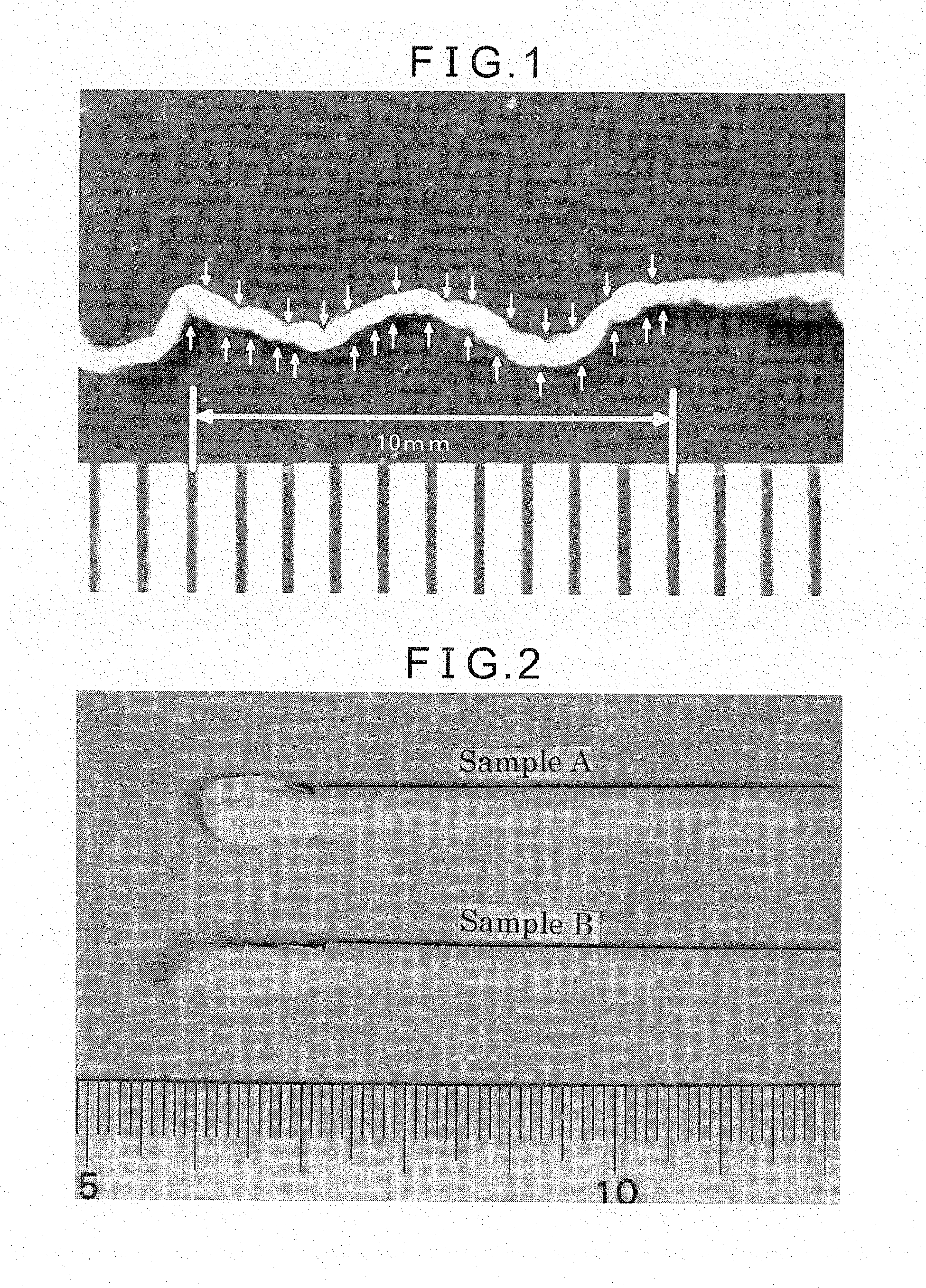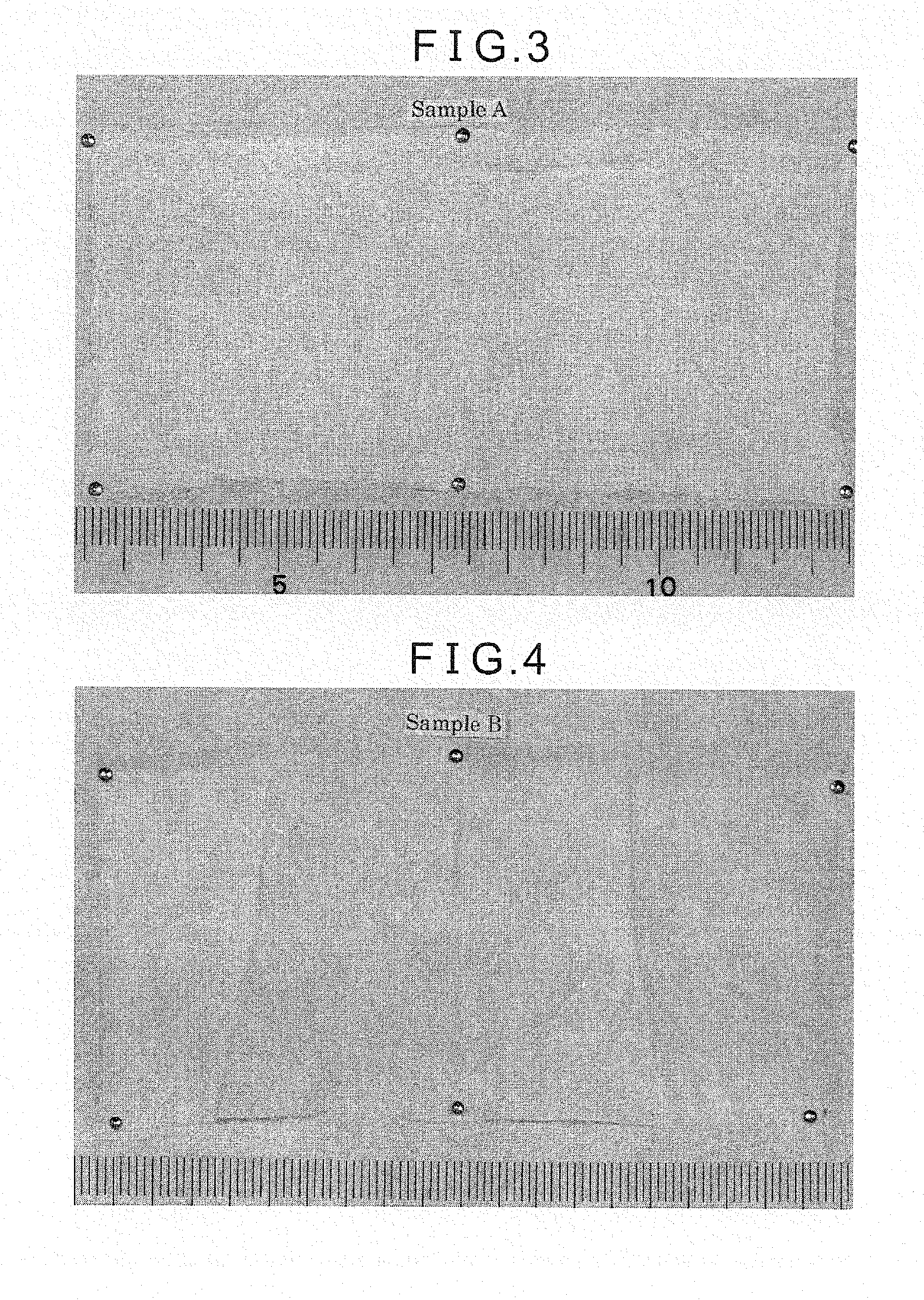Stent grafts
- Summary
- Abstract
- Description
- Claims
- Application Information
AI Technical Summary
Benefits of technology
Problems solved by technology
Method used
Image
Examples
example 1
[0087]Water jet treatment at a hydraulic pressure of 70 atm was carried out on the fabric A-1 produced in Comparative Example 1. The resulting fabric was designated as fabric A-2. The water permeability of the fabric A-2 as measured in accordance with ANSI / AAMI standards was 378 ml, burst strength as measured in accordance with ANSI / AAMI standards (burst test) was 16.8 kg, tear strength as measured in accordance ANSI / AAMI standards (suture retention test) was 0.82 kg, and thickness was 72 μm. Observation of the fabric with a scanning electron microscope (SEM) revealed that the microfibers were separated. Although gaps between fiber filaments varied at about 30 μm to 100 μm, the fiber filaments were adequately dispersed. When the fabric was embedded in resin to prepare sections and cross-sections containing microfiber bundles were observed, the microfiber filaments were observed to be in a dispersed state and large gaps were observed between the fiber filaments. Porosity of the micro...
example 2
[0091]Microfiber bundles having a total linear density of 52 dtex / 350 filaments were selected, and false twist treatment was carried out at 4000 twists per meter. Optimum conditions during texturing, including thread tension, twisting speed, temperature and humidity, were selected empirically. False-twisted microfiber bundles were obtained with this procedure. Following false twist treatment, as a result of observing the fibers with a magnifying glass having a magnification of 10× without applying tension to the fibers and counting the number of crimps, fine crimps (microcrimps) were observed at the rate of about 25 per centimeter. These textured fibers are referred to as microcrimped microfiber bundles. FIG. 1 shows a photograph of a microcrimped microfiber bundle.
[0092]A plain woven tubular fabric having an inner diameter of 32 mm was produced by using regular fiber bundles having a total linear density of 34 dtex / 24 filaments for the warp and using microcrimped microfiber bundles...
example 3
[0099]A 5 cm portion of the fabric A-2 having an inner diameter of 32 mm was removed and attempted to be inserted into a sheath. Although the fabric tightly fit into a 7 French (2.3 mm) sheath, it was easily able to be inserted into an 8 French (2.7 mm) sheath. In order to compare with the sheath-inserted fabric D-1 described in Comparative Example 9, the fabric A-2 was inserted into a 12 French sheath. This state was referred to as “sheath-inserted fabric A-2”.
[0100]The aforementioned “sheath-inserted fabric A-2” and “sheath-inserted fabric D-1” are shown in FIG. 2. The sheath-inserted fabrics were subsequently sterilized by autoclaving for 20 minutes at 121° C., after which the fabrics were removed from the sheaths and spread out, the states at that time being respectively shown in FIGS. 3 and 4. Sample A indicates the “sheath-inserted fabric A-2”, while Sample B indicates the “sheath-inserted fabric D-1”. After autoclaving, although lines in the manner of shallow creases were abl...
PUM
| Property | Measurement | Unit |
|---|---|---|
| Length | aaaaa | aaaaa |
| Length | aaaaa | aaaaa |
| Thickness | aaaaa | aaaaa |
Abstract
Description
Claims
Application Information
 Login to View More
Login to View More - R&D
- Intellectual Property
- Life Sciences
- Materials
- Tech Scout
- Unparalleled Data Quality
- Higher Quality Content
- 60% Fewer Hallucinations
Browse by: Latest US Patents, China's latest patents, Technical Efficacy Thesaurus, Application Domain, Technology Topic, Popular Technical Reports.
© 2025 PatSnap. All rights reserved.Legal|Privacy policy|Modern Slavery Act Transparency Statement|Sitemap|About US| Contact US: help@patsnap.com



